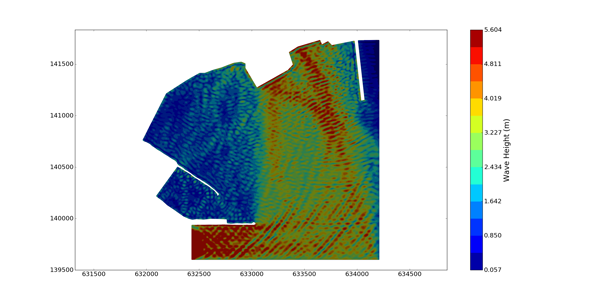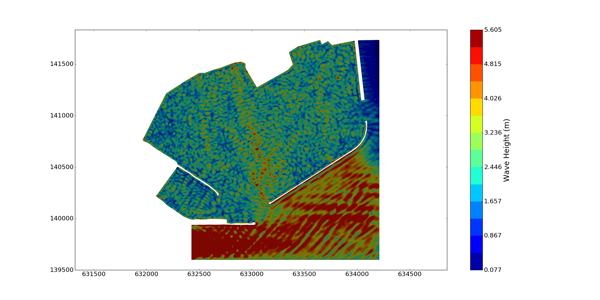
Port modelling
JM Coastal combine a range of modelling tools to simulate conditions in ports and harbours.
Port modelling can incorporate many aspects of coastal modelling such as the simulation of tidal elevations, currents, and sediment transport including scour around structures and dredging. Other aspects of modelling ports include defence overtopping, stability under wave loading and wave modelling and agitation.
Wave agitation models such as the ARTEMIS module of the TELEMAC system can simulate wave dynamics in ports, harbours and small bays under various incident wave conditions. Physical phenomena such as:
- Wave refraction around a structure
- Wave diffraction behind a structure
- Wave dissipation due to bottom friction or breaking
This allows the effect of breakwater and docking wall locations to be simulated and the effect of the port design on the interior tranquility to be investigated.
In the example test case below, the wave height in the harbour is determined due to a 3 m wave height with an 8 second peak period propagating perpendicular to the southern boundary in the presence and absence of a breakwater.


A mono, or multidirectional wave entering a harbour or a bay with a certain peak period, is in reality a superposition of a number of waves of different periods that make up the total energy spectrum. The software takes into account the random aspect of the incoming wave in different frequency or directional bands that characterize the total energy spectrum before determining the overall wave height.
For more information on how various modelling tools can be used to simulate conditions that affect port and harbour design or operations please get in touch: john.maskell@jmcoastal.co.uk
